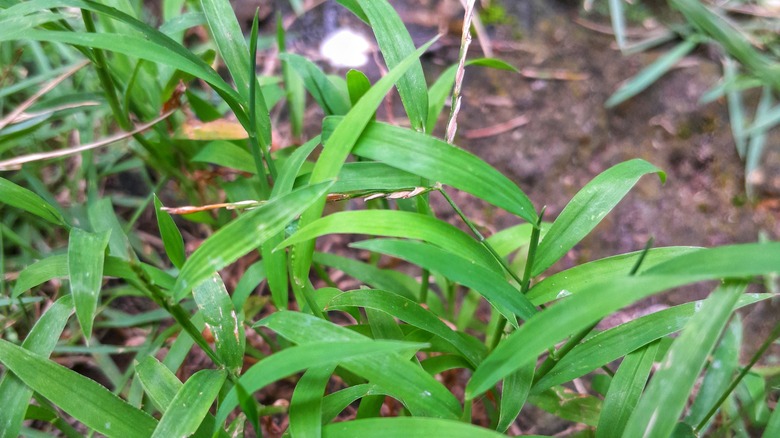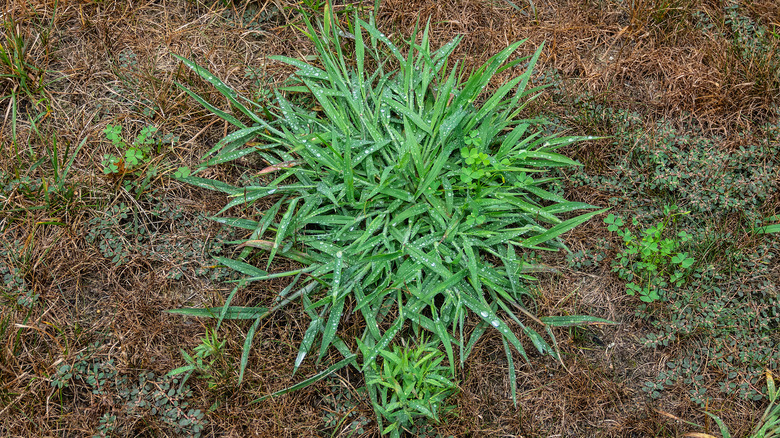Consider One Warning Before Using Pre-Emergent Herbicides To Prevent Crabgrass
Every spring, homeowners and gardeners get ready to battle crabgrass (Digitaria spp.). This persistent weed loves to sprout as the soil warms up, competing with turfgrass and creating a patchy, uneven look on the lawn. The first instinct of many homeowners might be to use a pre-emergent herbicide to prevent crabgrass before it even has the chance to grow. These herbicides are designed to stop seeds from germinating, acting like an invisible barrier in the soil that disrupts the growth process of unwanted seeds. Although they are effective, using pre-emergent herbicides comes at a cost, as they can negatively impact the outcome of your lawn-care efforts.
Pre-emergent herbicides actually stop all seeds from germinating — not just the crabgrass. For anyone planning to seed their lawn, this is an essential warning. You should never apply pre-emergent and grass seed at the same time. If you use a pre-emergent herbicide in an area where you plan to sow grass seeds, it will prevent them from sprouting. This is a common mistake when dealing with crabgrass, but it can be a frustrating outcome for anyone trying to thicken up their lawn or fill in bare patches while avoiding crabgrass. In short, when it comes to seeding and using pre-emergent herbicides, timing is everything.
When to seed and when to treat for crabgrass
To achieve a thick, crabgrass-free lawn, it's important to choose either seeding or pre-emergent treatment based on the season. If you're seeding your lawn in the spring, skip the pre-emergent and allow your grass seeds a chance to grow without restriction. Otherwise, the pre-emergent herbicides' residual effects can last weeks or even months, making any new seeds ineffective. Instead, you may want to consider seeding in the fall when crabgrass is less active. Seeding in the fall gives your grass time to establish itself over winter, allowing a strong start in the spring and making it easier to apply pre-emergent for crabgrass in early spring before it begins to germinate.
If waiting until fall isn't an option, some people opt for a split application, which essentially divides the amount of herbicide into two or more smaller applications spread out over time. They'll skip the spring pre-emergent on areas where they're seeding and apply it only in established areas. This lets them enjoy both new growth and crabgrass control. However, this requires careful planning and patience. While there are also ways to kill crabgrass naturally, knowing the effects of pre-emergent herbicides on all seeds is the first step to ensuring a successful lawn-care strategy. With a little planning and timing, you can enjoy both a healthy, thick lawn and a crabgrass-free season.

